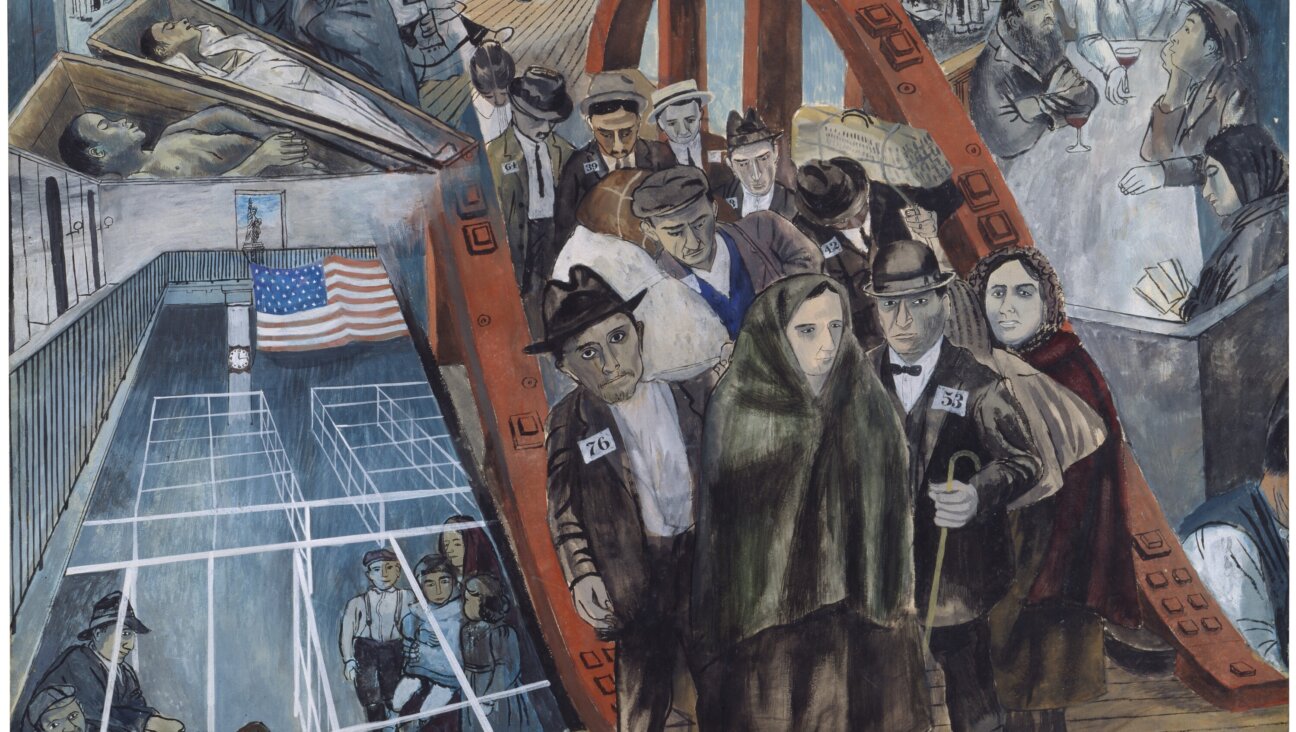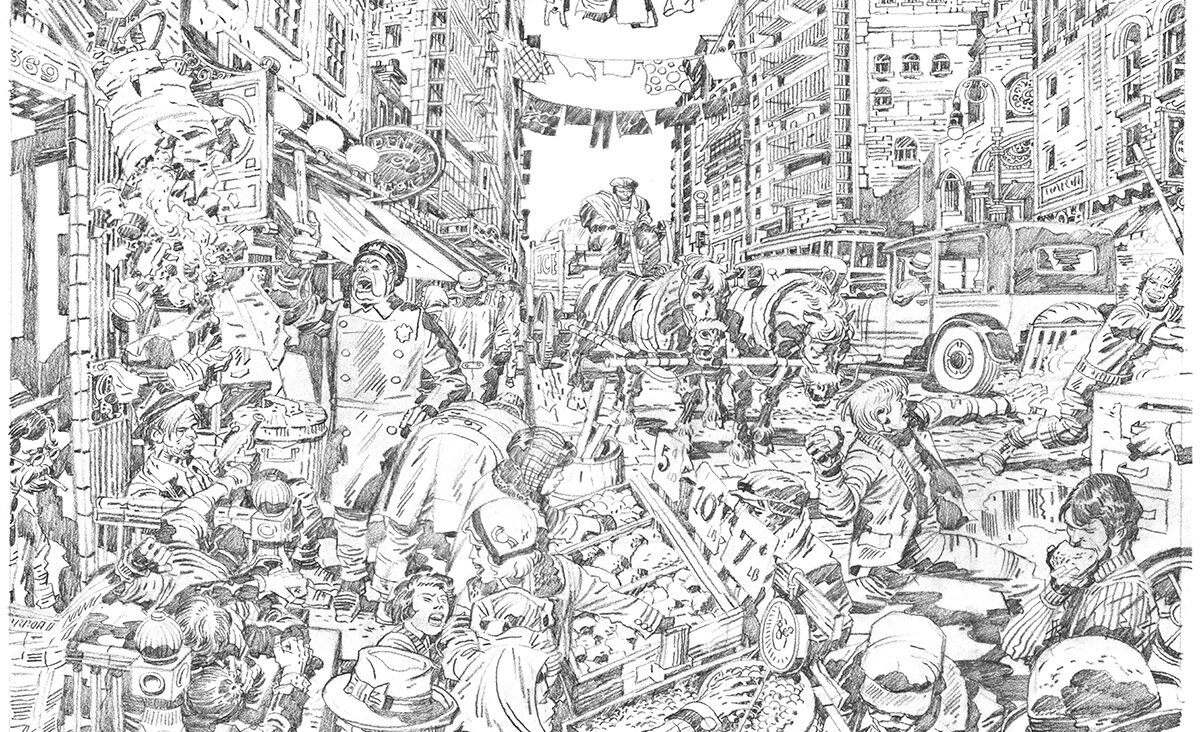Monsters, Monsters And More Monsters In a Thrilling Graphic Tale

Graphic by Angelie Zaslavsky
Last night, trying, excitedly, to summarize “My Favorite Thing Is Monsters,” Emil Ferris’s debut graphic novel — or at least Part 1 of it — for my husband, I hit upon an obstacle: The book, which takes the form of a spiral-bound, three-hole-punch sketchbook/detective case study, kept by 10-year-old Chicagoan Karen Reyes, is kind of, sort of, impossible to represent accurately, or at least as accurately as it deserves. And that’s not even taking into account that so much of the work is visual. This seems like an obvious thing to say about a graphic novel but it is actually a particular thing to say about “Monsters,” which dispenses with typical comics panels and instead dazzles with detailed, cross-hatched ballpoint pen drawings, largely in black and white, with bursts of color so vivid that you can practically, as Karen herself says she is able to do, smell them.
Karen’s synesthesia — “I should mention that this seeing/smelling thing happens a lot to me,” she observes early in the book — is just one striking but somehow subtle aspect of a work that is remarkably striking and subtle at every hairpin turn. Considering some of the subjects “Monsters” looks to in the course of its 386 large-scale pages, subtlety is an improbability, a sleight-of-hand that leaves the reader wondering, “How did she do that?” Here are just some plot points: Weimar Germany, the Holocaust, prostitution, child sex slavery, murder, Vietnam, the 1960s, cancer, same-sex desire and gender dysphoria, parental death and abandonment, racism — and, of course, monsters.
That list surely makes “Monsters” sound unwieldy. It isn’t. At its core, “My Favorite Thing Is Monsters” is about what we want to see and what we, sometimes deliberately, fail to, about what we are looking at when we look for something else, about the inevitability of growing up and facing a world that is cold and cruel but also improbably filled with beauty.
Part of what makes “Monsters” so effective — and I want to acknowledge here that, in fact, it is really the secret alchemy of all of its many parts that makes it work as well as it does, and so pulling out singular elements cannot ultimately capture the enormous beauty of the sum total — is its candid acknowledgement of the co-existence of beauty and ugliness, of how easily one shades into the other.
Standing under the train tracks after a last-minute escape from an assault by some neighborhood boys, Karen marvels, “For a minute I stood and thought about how it’s so beautiful under the El… but if Jerry’s gang had actually done what they tried to do, I probably wouldn’t love the train sound anymore.” For Karen, “this is just another reason why being a human girl stinks compared to being a monster. When I’m a monster I won’t have to keep my mouth shut. No, I’ll open my mouth and use my rows of long sharp teeth to rip up guys like Jerry.”
Karen longs to become a monster because staying a 10-year old girl who will be condemned to shape-shift into a woman seems a hopelessly ugly proposition. Indeed, being human is hopelessly ugly. As a monster, Karen reasons, she would not be subject to mortality, and she would be able to save her mother and her brother, Diego Zapata, affectionately known as “Deeze,” from their otherwise inevitable end. Her notebook grants her wish: Karen depicts herself as a werewolf girl, underbite fangs projecting upward, like a fantasy-fulfilled thumbs-up. We see her in her “girl” guise only once, when Deeze forces her to confront her image in the mirror, but, as “Monsters” makes robustly clear, what we see is not what we get, and what we get comes back to haunt us long after it can no longer be seen.
Look, I know I’m being opaque. The thing is — the thing that makes “Monsters” so compelling in itself, and the thing that makes it so hard to explain — as with poetry, which may be the form most analogous to the graphic novel in its imperviousness to synopsis, the attempt to sum up the narrative threatens to make melodramatic or risible what is genuine and affectingly, achingly sad.
But here goes anyway: After her upstairs neighbor, the beautiful, erratic, possibly mad Anka Silverberg, dies under mysterious circumstances, Karen resolves to find out what happened. (The official verdict is suicide, but Karen does not buy it: After all, Mrs. Silverberg was shot in the heart in her living room but was found neatly tucked into her bed.) Anka, it turns out, was a Holocaust survivor, a woman who paid a terrible price to survive. (“She wasn’t actually blue,” Karen notes, having shaded Anka’s large-eyed visage in quick strokes of blue, “but she always looked as if she might start crying at any minute.”)
In tapes played for Karen by Anka’s widower — whose alibi for his wife’s murder does not quite check out — we listen to Anka’s testimony, delivered in a husky, smoke-inflected voice. (The drawings make it possible to believe we can hear it.) Anka’s story begins in the brothels of Weimar and eventually leads to the camps; as Part 1 concludes, we know that Anka is about to escape at great personal cost, and we know, too, that she will save others, while positioning them — six young girls — to pay, too.
In the meantime, Karen’s mother is ill, and her brother, a womanizing artist who was having an affair with the much older Anka and who taught Karen to love art, is acting erratically, half-confessing to a murder: Perhaps Anka’s, perhaps another. Also, Karen is an outcast at school, a friendless freak who pines for her onetime companion, the now popular-girl Missy, and may be associating with a ghost, or at least someone invisible to others. And, Uptown Chicago is aflame and a-roar, especially after the assassination of Martin Luther King Jr. Is it any wonder that Karen’s favorite thing is monsters, and not just because they make for a multipurpose metaphor?
As Part 1 comes to a close, there are no resolutions, only cliffhangers and lingering mysteries. In fact, one obvious way “Monsters” hews to convention is its adherence to leaving the reader wanting more.
Yevgeniya Traps writes about books and arts for the Forward.






















